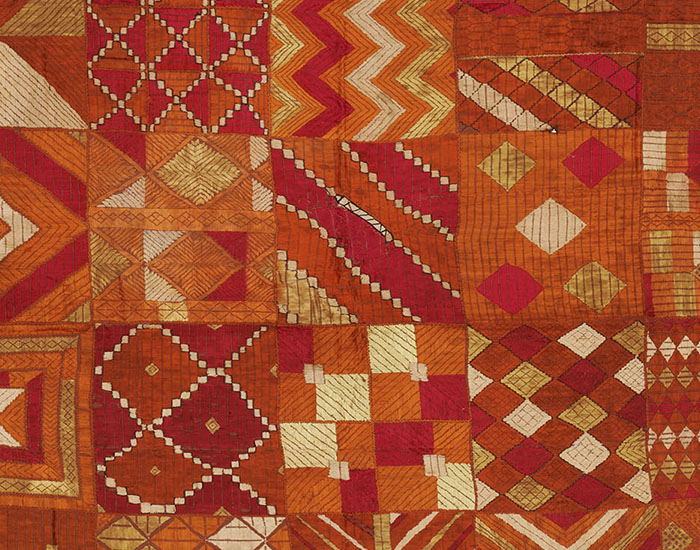
A type of bagh embroidered on a red base cloth with rectangular cells, each containing a different geometric motif in threads of various colours, the bawan bagh has between forty-two and forty-eight cells placed in the main field of the base cloth — usually a chaddar — and the remainder being placed in each border at either end of the cloth. Its name derives from the Punjabi word bawan, meaning “fifty-two.”
Due to the time and skill required for the craft, bawan bagh embroidery is rarely practiced today. However, examples of historic bawan baghs can be found in the Jill and Sheldon Bonovitz Collection at the Philadelphia Museum of Art.
First Published:
Last Updated: July 26, 2023

